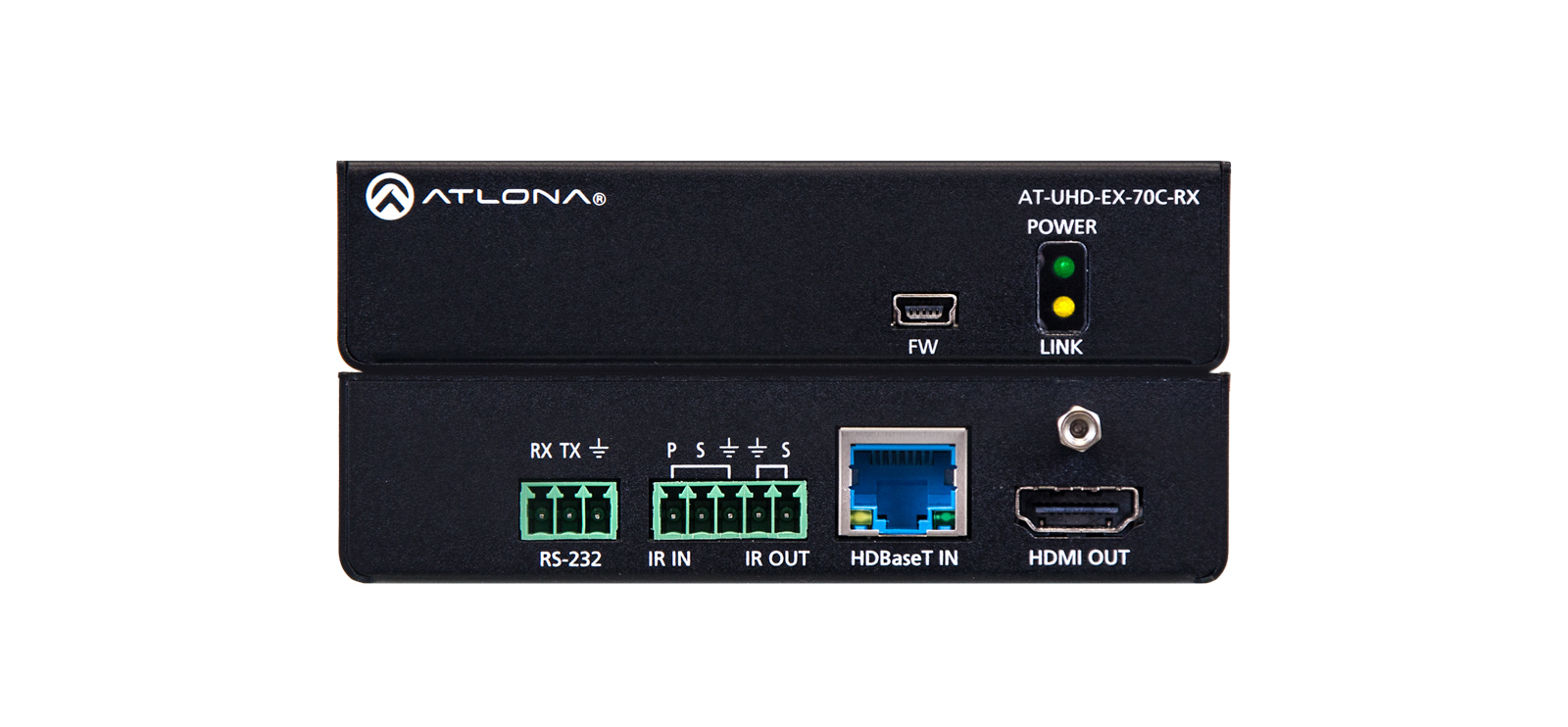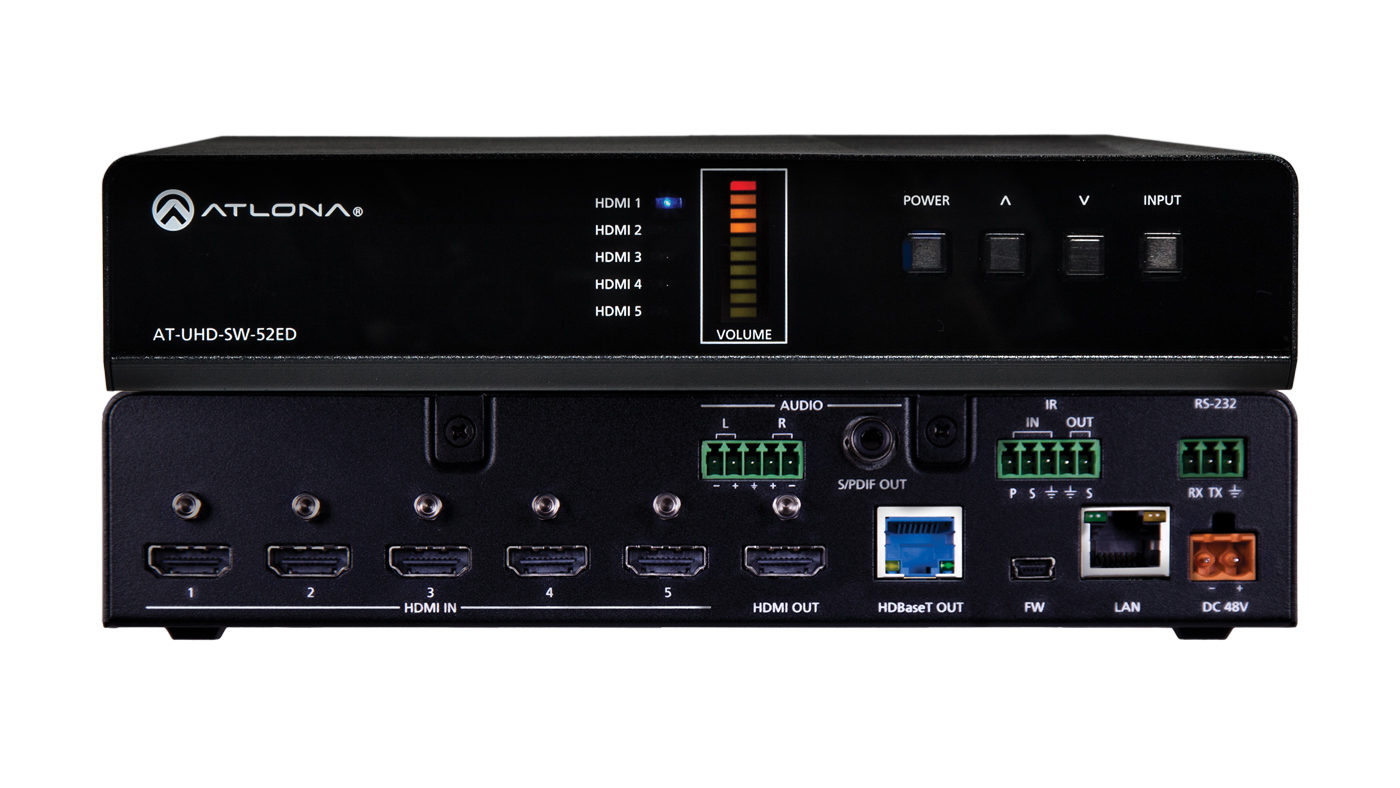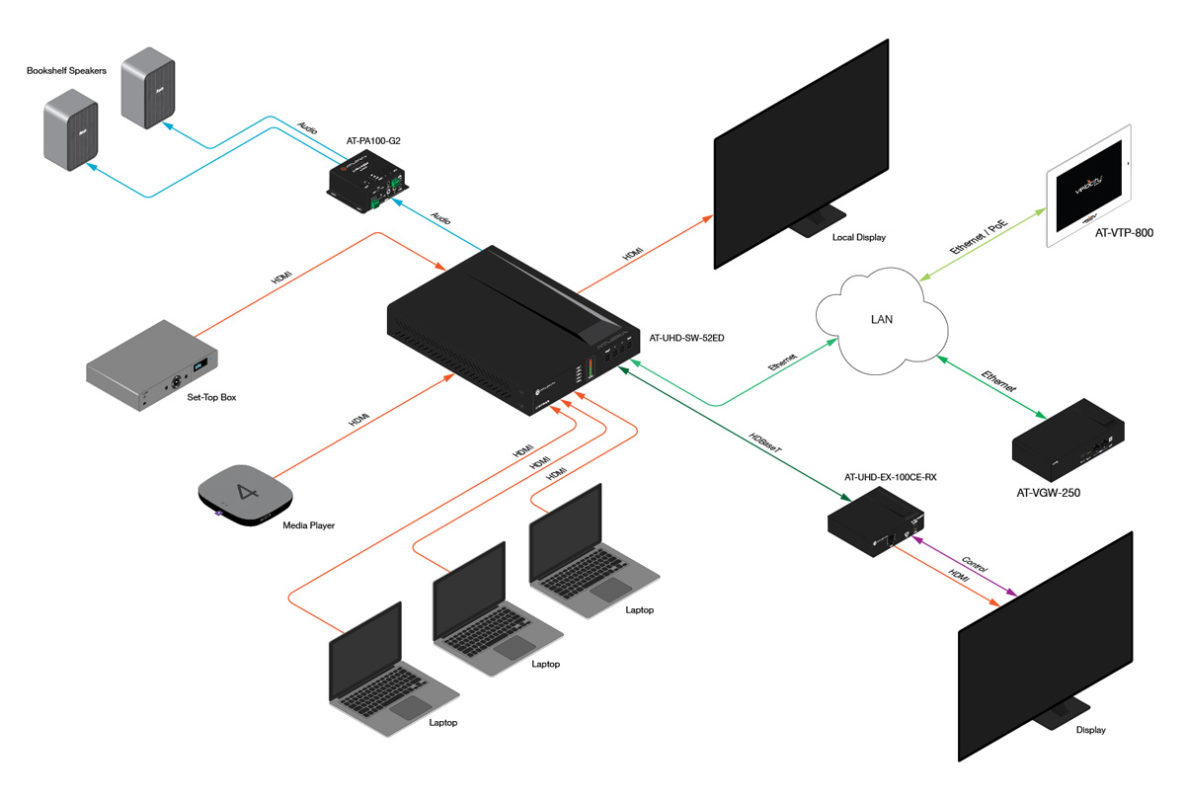Case Study: Morley Stanwood Community Schools District, Morley, Michigan
A Michigan school district transitions to digital, eliminating the past headaches of analog AV while bringing new capabilities into the learning environment
Education
Download the Case Study PDF
The summer slowdown in the K-12 hallways creates an ideal opening for school districts to accelerate improvement projects. Approximately 40 miles north of Grand Rapids, Michigan, the Morley Stanwood Community Schools district took that opportunity to refresh its classroom AV systems district-wide, implementing active learning environments while reducing clutter across 60 classrooms.
The Morley Stanwood Community Schools family comprises one high school, one middle school and one elementary school. Rather than take a phased, one-by-one approach, the district hired Innovative Communications to bring all three schools into the next-generation of AV at once, with all three schools ready to go in time for the 2019-2020 school year.
With streamlined architectures and a modernized infrastructure in mind, the Innovative Communications team set out to find a “single-box” solution at the core to accommodate video and audio switching in the classroom.
“Our initial design plan leveraged more wireless inputs and audio de-embedding capabilities, but the district was concerned about teachers’ desks being cluttered with extra boxes,” said Jeff Zalucha, Account Executive, Innovative Communications. “We then set out to simplify the plan, and explored the idea of an HDMI switcher that could offer both an HDBaseT output and an audio output. We were surprised to discover how rare it was to find these capabilities in a single device.”
“Most importantly, we wanted a system that was simple for teachers to use,” Zalucha continued. “They needed a way to effectively manage projectors and document cameras, for example, without a mess of cabling and infrastructure in the way.”
With few options on the market to consider, the search quickly led Zalucha to Atlona’s AT-UHD-SW-52ED, a 5×2 HDMI switcher with mirrored HDBaseT and HDMI outputs.
Now up and running, the switchers manage signal routing and distribution for a variety of existing projectors, Elmo MX-P document cameras, Lightspeed 955 Access classroom audio systems (mostly in the elementary school classrooms), and desktop PCs among other devices.
“We wanted a system that was simple for teachers to use.”
– Jeff Zalucha, Account Executive, Innovative Communications
MAKING THE GRADE
As is typical in many K-12 schools, much of the existing technology was antiquated and required removal – followed by the rollout of a new infrastructure to support next-generation systems.
“Everything was wired for analog as it existed with no real digital backbone to speak of, so much of this was about catching up with the times,” said Zalucha. “We removed the old CRT televisions and removed the analog wiring going to the projectors. Most of the existing projectors had digital inputs, so we ran Cat6 cabling to support HDBaseT direct into the projectors. We also installed new speakers and cabling in every classroom to support the audio systems.”
The streamlined design plan allowed the Innovative Communications team to place most of the technology at the teacher’s desk, without taking up important space. Each desk includes the Atlona switcher, the Elmo camera, audio amplifiers, and a dedicated teacher’s PC. The installers also ran an auxiliary HDMI cable to plug in laptops or mobile devices.
“That extra cable gives teachers or presenters a way to deliver lectures or stream music through the system in a quick and easy manner,” said Zalucha.
The Atlona switchers provide the connectivity for all other aforementioned components. “Each switcher has an HDMI input for the document camera and the PC, as well as the auxiliary input for outside devices,” said Zalucha. “The other two inputs are reserved for Chromecast dongles and a future expansion slot, which gives each classroom some flexibility to add future capabilities to the system.”
The choice of document camera came down to keeping things as simple as possible without sacrificing image resolution. “The MX-P is fairly basic from a features perspective, with standard zoom, brightness, and auto-focus capabilities,” said Zalucha. “There are no advanced streaming capabilities for example, but it’s very user-friendly and provides great resolution.”
One popular attribute with the teachers is that the camera arm rotates 360 degrees, which allows teachers to aim the camera out toward the students, up at the blackboard, or straight down at the desk. “It provides that extra flexibility during the learning process, and they can easily manipulate the lens and other elements of the system for emphasis.”
THREE IN ONE
Zalucha points to the de-embedded audio output on the Atlona SW-52ED as a critical feature, as it removed the need to piecemeal three separate devices in each classroom. Teachers can manually switch between inputs as needed (from the front panel or via a remote), easily transitioning from using the document camera to streaming music, if desired.
“The sound reinforcement systems in the high school and middle school classrooms feed line audio to four recessed ceiling speakers, which are powered by Atlas mixer amps,” said Zalucha. “The elementary school system adds the Lightspeed amplifiers and some microphones. In both scenarios, the Atlona switchers feed these systems directly, which saved both money and space for the school district. The HDBaseT output then enhances the overall value by allowing us to feed the projectors directly, without converting to an HDMI cable. These switchers really serve three purposes in one box.”
The classrooms today move mostly 1080i content around, though the system can accommodate 1080p video. With some future upgrades, each classroom will be fully 4K/UHD-capable.
“The content is all HDMI digital today, though the Elmo, Chromecast, and Atlona systems and cabling backbone are all built to accommodate higher resolutions,” said Zalucha, noting that many of the projectors would require upgrades. “We did purchase new Epson laser projectors that are 4K capable for other spaces, including the media center and the cafeteria,” he said. “But the majority of the classroom projectors were still in excellent shape and adapted to the new system to save money.”
From the integration point of view, Zalucha is specifically pleased with the clean-up job that came with the new architecture.
“With this single-box integration, it’s now much cleaner and simpler without all the crisscrossing of cables,” said Zalucha. “There’s no more effort involved with keeping things neat, and no technical nightmares that come from disconnecting cables. If a custodian needs to clean the area, it’s as simple as unhooking two cables and then plugging them straight in again. Everything is functional without the mess, and without any troubleshooting.”
“With this single-box integration, it’s now much cleaner and simpler without all the crisscrossing of cables.”
– Zalucha
| PRODUCTS FEATURED | ||
| Model | Description | Image |
| AT-UHD-SW-52ED | The Atlona AT-UHD-SW-52ED is a 5×1 4K/UHD HDMI switcher with HDMI and HDBaseT outputs, balanced analog audio outputs, automatic input selection, and automatic display control capability. The switcher supports 4K/UHD @ 60 Hz with 4:2:0 chroma subsampling. |  |
| AT-UHD-SW-51 | The Atlona AT-UHD-SW-51 is a 5×1 HDMI switcher with auto-switching and automatic display control capability. The switcher supports 4K/UHD @ 60 Hz with 4:2:0 chroma subsampling. With front panel buttons and IR control, it can be a standalone switcher. |  |
| AT-UHD-SW-52 | The Atlona AT-UHD-SW-52 is a 5×1 HDMI switcher with dual HDMI outputs, balanced audio outputs, automatic input selection, and automatic display control capability. The switcher supports 4K/ UHD @ 60 Hz with 4:2:0 chroma subsampling. |  |
| AT-UHD-EX-70C-RX | The Atlona AT-UHD-EX-70C-RX is an HDBaseT receiver for AV signals up to 230 feet (70 meters) over category cable with RS-232 and IR control pass-through, and is powered over HDBaseT. It is compatible with video signals up to 4K/ UHD @ 60 Hz with 4:2:0 chroma subsampling. |  |
| AT-ANC-108D | The Atlona AT-ANC-108D is an 8-button network control panel for Atlona AV switchers. It is designed for easy configuration using Atlona Management System (AMS). The ANC-108D only requires a single category cable, from a PoE-equipped network switch, to deliver both control signal and power, and provide fast, hassle-free installation. |  |









